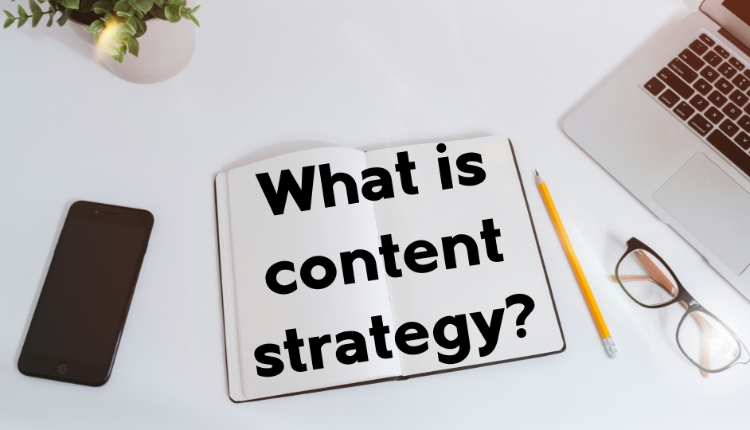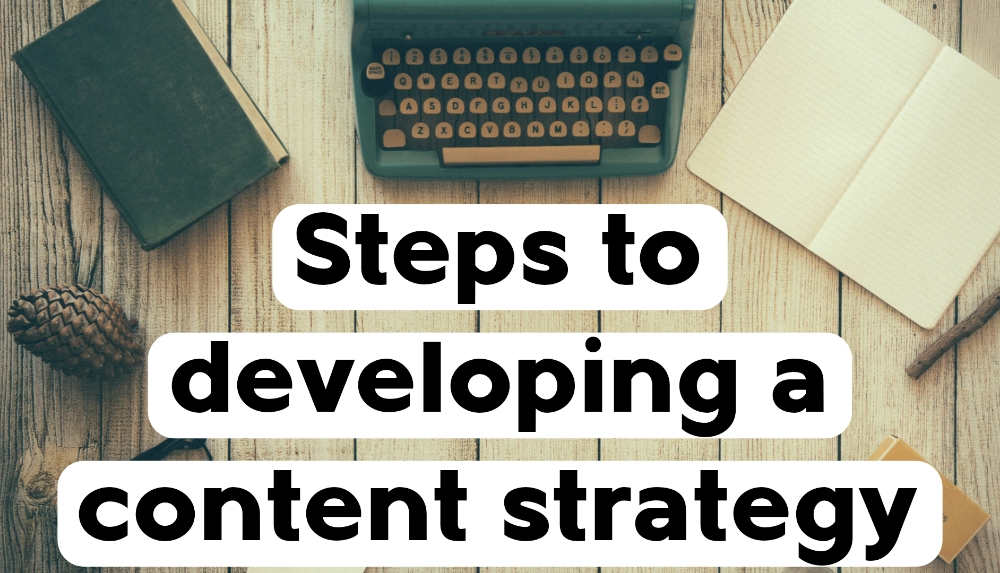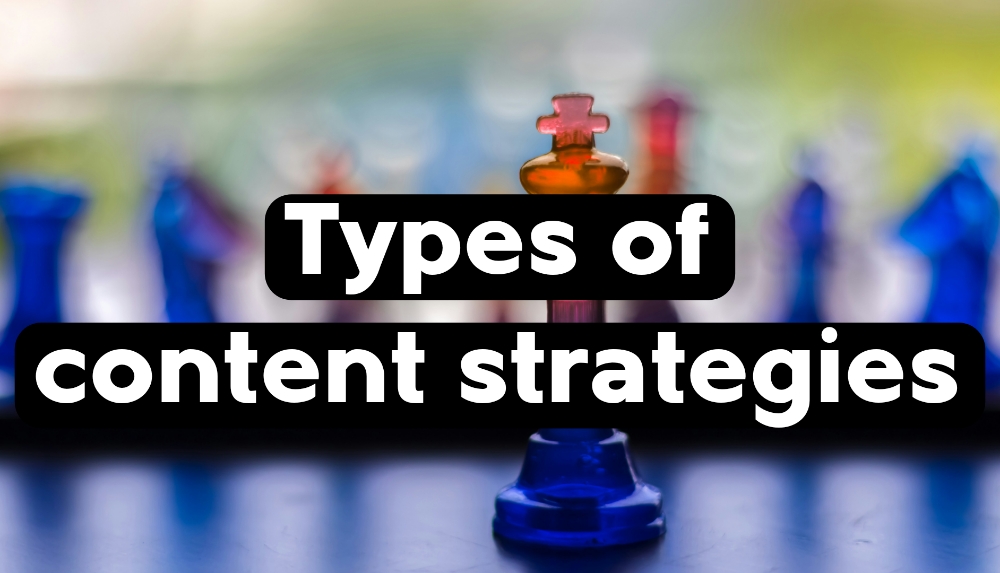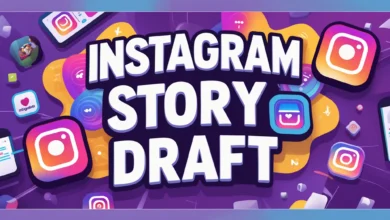What is content strategy or content marketing strategy? 2025

We need a strategy to succeed in anything we do, and content is no exception! A content strategy is responsible for meeting business needs through the creation and distribution of content. Content development, planning, creation, delivery, and management form the main pillars of a content strategy.
The goal of content strategy is to create meaningful, coherent, engaging, and sustainable content that will engage your organization’s target audience. In today’s online world, delivering the right message to the right customer at the right time is critical. Reaching those critical points requires brand-specific content strategies and tactics.
What is content strategy?
Every action requires specific and targeted planning to achieve various goals. Content creation is no exception, and it needs to be aligned with your goals in order to be useful for your business.
Content strategy is a written and detailed plan for reaching your target audience. It determines what type of content should be produced for each channel and how it should be distributed. We will learn more about this concept and its various aspects below.
Benefits of setting and developing a content strategy
You may have wondered about the purpose and benefits of strategizing and planning the content to be published. And what’s wrong with going without a content strategy? Learning about the benefits of developing a content strategy will answer these questions well.
Time is very valuable, and a business can get ahead of its competitors by making the best use of it. Having a strategy will save you time on content creation. Suppose you don’t have a plan for your next piece of content; you have to spend a lot of time in your day finding relevant topics, keywords, and so on, but with a written plan, it’s like you’re going through several steps at once.
Developing a content strategy helps ensure that your content is targeted and increases your chances of attracting an audience. This way, you can provide the right feed for your site’s audience and stay ahead of your competitors. Plus, you’ll have consistent content across all your content distribution channels.
Why do we need a content strategy?
Many marketing managers have found that having a proper content strategy can improve their organization’s marketing results, but they may not know why. Here are four reasons why a content strategy is important for producing quality content in today’s marketing world:
- High-quality content attracts and engages customers and builds trust.
- High-quality content allows you to reach your target customers without getting blocked. About 30% of internet users use ad-blocking software, which translates to roughly a third of paid advertising messages never reaching their intended audience.
- High-quality content helps consumers remember a brand and encourages them to engage with it more.
- High-quality content increases your site’s traffic and search authority.
The impact of content strategy on website SEO
In recent years, Google has tried to bring itself closer to people and their interests with frequent updates. Now, Google’s interests are very much dependent on the interests of users. If the audience likes and reacts to an article, Google also likes that content.
Therefore, it is important to work on our business’s content and attract the audience by developing a content strategy and directing them correctly. This way, Google will understand our content better and rank it better.
Remember that you are developing a strategy for users, not Google bots, and you must be able to answer your audience’s questions and needs correctly and appropriately.
What is the difference between content strategy and content marketing?
Content strategy is a higher-level business activity than content marketing. It is the roadmap that guides your content marketing and keeps it on track. The content strategy determines who your content will impact, how it will reach its target audience, and how it will achieve the best results for your business.
Content marketing, on the other hand, is the process of organizing, scheduling, creating, and publishing content. Its tactics are formulated with the help of a content strategy.
Your content strategy will answer the following questions:
- What do you want to do?
- Who is your target audience?
- What type of content will you publish?
- How can your content represent your brand?
- How can you differentiate your content from your competitors’ content?
- How will you promote and amplify your content?
- What metrics do you use to measure the success of your content?
You would never plan a trip without knowing where you are going! A content strategy ensures that your content marketing efforts are headed in the right direction. Without a clearly defined strategy, you may end up wasting a lot of time and money writing content or hiring content creation services that won’t reach your audience or deliver the business results you want.
Types of content strategies
Different types of content strategies can be considered, depending on your goal of producing content. Content strategy development is done in the following types:
- Sale
The strategy that falls into this category pursues a goal called direct sales. Developing a sales content strategy will not help you attract new audiences; instead, it will help audiences who are interested in your services and products become customers and make a purchase.
This type of strategy includes content that answers audience questions, explains the purchase path, and discusses its challenges.
- Awareness raising
The content strategy developed in this section is not intended to sell directly to the audience. A more awareness-based content strategy helps build your brand and attract more visitors, which then leads to a sale.
This strategy, called the awareness funnel, aims to educate readers, improve site authority, and build brand awareness.
- Leadership Thoughts
This type of content strategy is for when you are an expert in a subject and have years of experience to put into your content. You should target this content when your company or you are recognized as a leader in your field of expertise.
In this strategy, processes are explained step by step, the future of the business field is predicted, and specialized and in-depth explanations are given on related topics. For example, consider a company or individual that operates in the capital markets; this type of strategy is very suitable for these companies. This type of strategy
development shows that you have the necessary expertise in your field of work. If you are a market leader, the content you produce will be distributed for free by other channels.
Steps to developing a content strategy
Now that you understand content strategy and its importance, it’s time to get down to the details of creating one. Join us as we explore the essentials of building a successful content strategy.

Determine your content goals.
Before you launch any new content strategy, it’s important to have clear business goals and KPIs for it. After all, without goals, you can’t create a strategy and measure the success of your plans.
Goals guide your next steps and drive your content strategy, so build your goals around the results you want to achieve. Are you looking to rank? Are you looking to drive more traffic to your site? How much traffic? Are you looking to reach a specific audience segment? Are you looking to drive engagement? What kind of engagement?
By accurately answering the questions above, you can set your content goals and measure your results.
Define your customer personas.
Next, it’s time to research your audience and create personas. This step is crucial because focusing on a content strategy that targets the wrong audience will only waste time and money.
Perform detailed analysis of existing content.
A detailed analysis of your content and comparison with your competitors’ content will give you a better perspective for developing a content strategy. With these reviews, you will discover the strengths and weaknesses of your content, and you can find the following in them:
- Content is less valuable than competitors’ content
- Weakness in customer-interested content
- There are some shortcomings in the customer journey.
- Irrelevant content
- Poorly performing pages
Knowing who your customers are is not enough when reviewing and evaluating your content strategy. You also need to conduct a competitive analysis to have a strong and differentiated content strategy.
To develop your content strategy, don’t just analyze your direct competitors’ strategies; look at all the websites that are competing for your customers’ attention on Google’s search results page.
During these reviews, you may find that some of your blog posts are outdated, don’t align with your business goals, or aren’t performing well in organic search. In such cases, you need to decide whether you want to:
- Delete irrelevant posts.
- Update your old content.
- Combine multiple posts into one and create more valuable content.
- Write a completely new piece of content.
Create a roadmap for content needs throughout the customer journey.
Once you have identified your audience and customer personas, map out each persona’s journey throughout the sales funnel, for example:
- How do potential customers behave?
- What pages do they visit?
- What information do they want?
- How is content presented to them?
- What questions do they ask when searching?
The customer funnel helps you formulate your content strategy more accurately by answering the questions above.
For example, a blog post might target a common term in your industry to attract those who are just starting out on the customer journey. It might answer key questions and offer potential solutions to your audience. Or it might be a fun and engaging piece of content that’s meant to grab your audience’s attention.
At this stage, the customer may want more detailed, customized content that focuses on specific products, services, solutions, features, and benefits. Finally, at the bottom of the funnel, prospects want to compare their selected products and make a final decision; this is where you can use comparison content and discount codes to convert them into customers.
Don’t forget to do keyword research.
Keyword research is the foundation of an SEO-focused content strategy because it shows you the most valuable topics that are currently being searched for on Google. With thorough keyword research, you can cover all the important issues in one piece of content without having to write multiple blog posts with repetitive topics. This means more traffic, more engagement, and higher conversion rates.
Tools like Ahrefs and Semrush can help you find the most popular keywords in your industry.
Brainstorm to create engaging content ideas.
Next, use your keyword list to generate new content ideas. But with over 4.2 billion web pages competing for Internet users’ attention, how can you create unique, useful, and engaging content?
Fortunately, the content of most web pages indexed by Google is terrible! So, take this golden opportunity to iterate and improve on what’s already there.
The key to creating great content is to use an iterative ideation process. Don’t waste your time trying to come up with something that hasn’t been written. Instead, find new ways to make repetitive content more engaging and write the same content that’s already out there in a language that will appeal to a wider audience. Here are some ways to do this:
- Use proprietary data
- Make boring topics more interesting with visual content (photos, videos, etc.)
- Explain a complex topic in simpler language.
- Combine related content into a comprehensive guide.
Choose a content management system.
If you plan to produce a large amount of content, you need a robust content management system (CMS). CMSes allow you to create, organize, publish, and store different types of content, including blog posts, audio files, videos, photos, and more.
Create a content development process.
Your content doesn’t just happen on its own, so you need a content strategy development process that is clear, repeatable, and structured. Having a process for content development will help you consistently create high-quality, valuable content. Your process should include the following:
- Keyword research
- Select a title
- Introduction
- Draft
- Text editing
- Media selection
- Layout
- Optimization
- Browser preview
- Publication
- QA
Determine who is responsible for each task and how long they have to do it. These processes are interconnected and must be ready according to the deadlines you set so that they are not disrupted.
Create a content calendar.
A content calendar isn’t just a plan for scheduling your content releases. It’s an organizational structure that aligns your content team with your marketing tactics and goals. Depending on your organization’s goals, a content calendar should include:
- Content title
- Target audience or persona
- Content Format
- Author
- Deadline to write a brief description of the content
- Draft deadline
- Deadline edit
- Design and development deadlines
- Publication date
- Target keywords for SEO
- Main keyword volume
- Comments or other information
Does your content span multiple formats, such as a blog post that uses multiple videos or infographics? Then, you need to add the above to your content calendar for each format.
Your content calendar should be available online to your team members. Keep it organized and easy to review so you can see what you’ve published and what’s still in the works.
Prioritize quality over quantity.
If your audience is responding positively to the content you provide, don’t waste the opportunity to connect and engage with them by providing them with poor, worthless content. Remember always to differentiate your brand with exceptional quality.
Do you want to rank well in organic search? Then, you need to provide valuable content to your audience. This advice comes straight from Google. A successful content strategy will help you:
- Don’t waste resources on worthless content that no one is interested in.
- You focus on content that brings more traffic and leads to your site.
- Your peers see you as an expert in your industry; this helps you get organic backlinks.
- You will keep visitors on your site longer.
- You increase brand awareness among your audience.
But what constitutes valuable, usable content? It depends on your industry and could be unique market research, expert advice in a podcast, beautiful photos, or even engaging content and videos.
Publish long-form content
When it comes to Google rankings and organic traffic, long-form content like blog posts always wins. According to a study conducted by Semrush, long-form content generates 3x more traffic, 4x more shares, and 3.5x more backlinks. There are several reasons for this:
The first reason is that long-form content usually includes more keywords and answers more questions, improving its position on the search engine results page. The second reason is the issue of sharing. Long-form content is usually shared more and gets more backlinks.
Also, in long-form content, different formats, such as photos, videos, infographics, etc., make the content more attractive and valuable.
Building Expertise, Credibility, and Trust (EAT)
Brand trust impacts conversion rates, customer loyalty, SEO, and more. That’s why it’s so important to build trust with your audience by demonstrating your brand’s expertise throughout your content strategy.
You’re probably familiar with the concept of Expertise, Authority, and Trust (EAT). These three words are a set of fundamental principles for Google search. EAT is not a direct ranking signal; however, many of the ranking factors in Google’s algorithm are designed to measure it in some way. Therefore, improving the expertise, authority, and trustworthiness of your content can positively impact your site’s SEO.
Evoke your audience’s emotions.
Emotional content attracts more users. Arousing emotions makes them take action, such as purchasing, registering, or sharing your content on their social networks. This helps you get organic backlinks and increases your site visits and traffic.
Use different types of content.
Try to incorporate different content marketing examples into your content strategy. To choose different content formats, pay attention to your audience personas. For example, some people prefer visual content, others love podcasts and audio content, and still others prefer to read text content. You can use the following formats in your content strategy:
- Blog post
- Article
- E-book
- Interview
- Checklist
- News
- Infographic
- Video
- Survey
- Podcast
Define your content distribution and amplification strategy.
Your content strategy doesn’t end with publishing a blog post or a video. You’ve spent a lot of time and money producing engaging, professional content, so you shouldn’t just share it once and move on to the next project.
Try sharing posts multiple times on different social networks. Connect with other sites to promote your blog posts, images, or videos. Paid advertising can also help your content get more exposure.
Content distribution is a great way to increase website traffic. If you promote and distribute your content smartly, your marketing efforts will benefit.
Conclusion
Internet users are bombarded with all kinds of content and advertisements every day. For this reason, they prefer to filter out most of them. This important point tells you that you need to improve your content strategy. Try to create a good plan that will attract your users’ attention, generate traffic, and increase your site’s conversion rate.
A content strategy provides a roadmap for staying on track with your organization’s goals at all times. It helps you produce content that serves your audience and business goals, saving you time and money.
What is content strategy?
A content marketing strategy determines what type of content should be distributed through which channels and in what way to reach the target audience. Developing a content strategy helps businesses produce and publish each piece of content with a specific purpose, ensuring its success in attracting an audience.
How do you develop a content strategy?
To create a successful content strategy, you need to follow these steps:
- Determining business content goals
- Determining customer personas
- Analysis of existing content
- Identifying content needs along the customer journey
- Main keyword research
- Creating content ideas with brainstorming
- Choosing a content management system
- Creating a content development process
- Create a content calendar
- Determining a content distribution and promotion strategy








If our target audience is a wide range of people in a country who are interested in a topic and this topic is very general (like traveling), how should we select and address a more specific group among them?
Hello. Many topics like travel, cooking, sports, etc. are general, but we need to find a specific group by limiting them to a specific audience. Suppose we only consider travelers whose destinations are New York, India, Amsterdam, and Dubai, and we try to answer their needs and questions in our content.